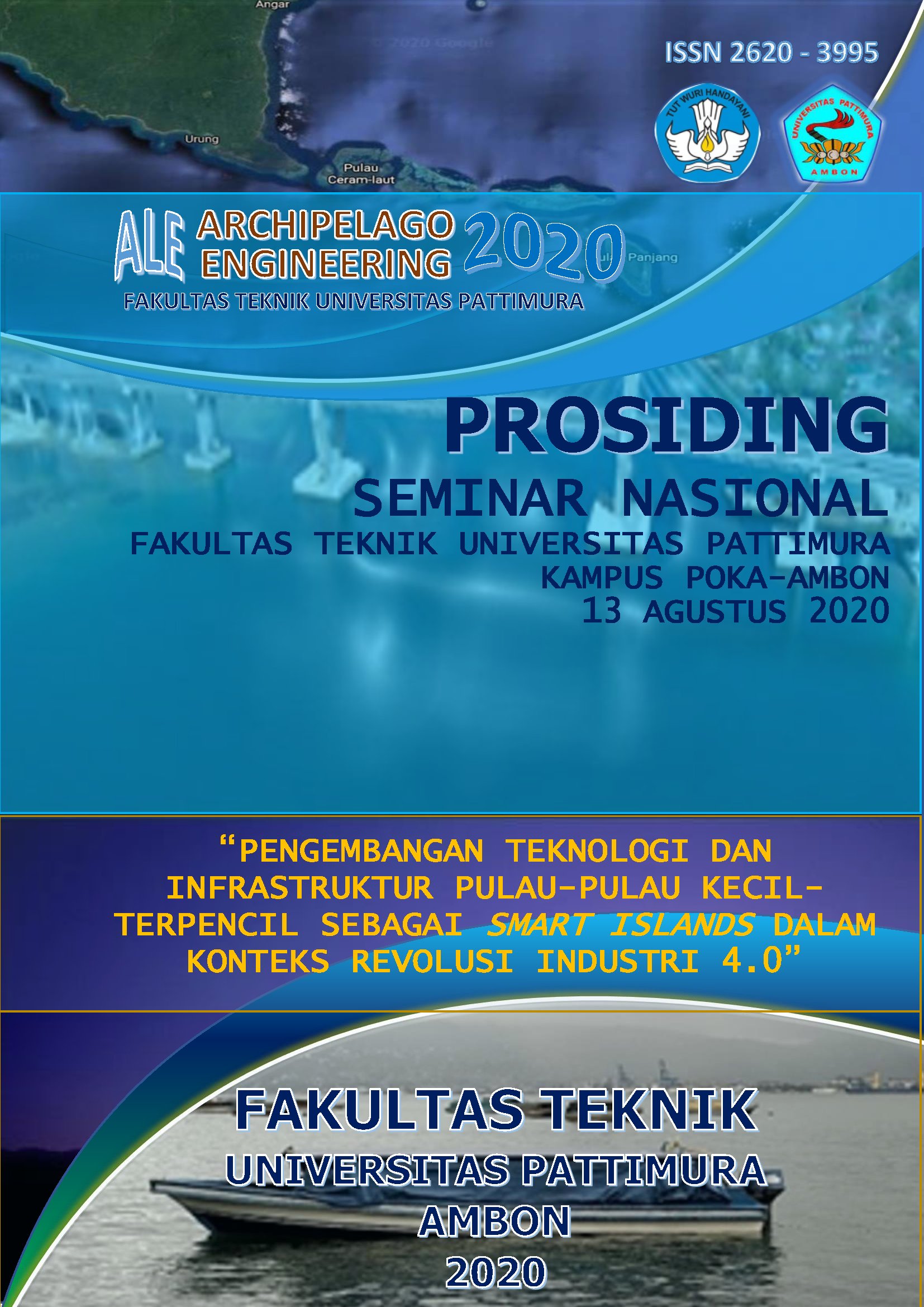MODEL INTEGER LINIEAR PROGRAMMING (ILP) DALAM PEMECAHAN TRAVELING SALESMAN PROBLEM (TSP) (STUDI KASUS : PT. PARIS JAYA MANDIRI – AMBON)
Abstract
Traveling Salesman Problem (TSP) merupakan suatu permasalahan penentuan rute kendaraan dengan mencari jarak tempuh minimum dari titik awal menuju semua titik tujuan dan kembali lagi pada titik awal dengan asumsi bahwa semua titik tujuan yang akan dilalui hanya dikunjungi sebanyak satu kali untuk memperoleh rute optimal distribusi produk. Pada penelitian ini mencoba menggunakan metode Integer Linier Programming (ILP) dalam menyelesaikan permasalahan TSP. Tolak ukur yang digunakan pada metode ini adalah jarak antar outlet dimulai dari mengukur masing-masing jarak dari gudang menuju oulet dan kembali ke gudang yang tersebar pada wilayah distribusi Sirimau 1 dan 2 serta wilayah distribusi Nusaniwe. Hasil penelitian menunjukan bahwa metode Integer Liniear Programming memiliki output effisiensi rute tempuh baik dari segi jarak sebesar 26.32% dan waktu total 7.42% dari rute regular perusahaan.
Downloads
References
Chopra, Sunil dan Peter Meindl., Supply chain management: Strategy, planning, and operations. New Jersey: Prentice Hall, 2010
Hillier, F & Lieberman, G.J (2001). Introduction to Operation Research. Seventh Edition. Mc Graw Hill . New York , USA
Hoffman, A.J. and Wolfe, P. “History†in The Traveling Salesman Problem, E.L. Lawler, J.K. Lenstra, A.H.G. Rinooy Kan, and D.B. Shmoys, eds., John Wiley, 1–16., 1985
Paillin. D.B dan Tupan. J.M (2018). Pemecahan Traveling Salesman Problem Menggunakan Teknik Branch and Bound dan Cheapest Insertion Heuristic (Studi Kasus: PT. Paris Jaya Mandiri–Ambon). Prosiding Seminar dan Konfrensi Nasional IDEC. 110-120.,Surakarta, 7-8 Mei 2018)
Paillin, D. B dan Sosebeko I, Penentuan Rute Optimal Distribusi Produk Nestle dengan Metode TSP. Jurnal ARIKA, Vol 11 No. 1. Pp.31-40, 2017
An author who publishes in the ALE Proceeding agrees to the following terms:
- Author retains the copyright and grants ALE Proceeding the right of first publication of the work simultaneously licensed under the Creative Commons Attribution-ShareAlike 4.0 License that allows others to share the work with an acknowledgment of the work's authorship and initial publication in this journal.
- Author is able to enter into separate, additional contractual arrangements for the non-exclusive distribution of the journal's published version of the work (e.g., post it to an institutional repository or publish it in a book) with the acknowledgment of its initial publication in this journal.
- Author is permitted and encouraged to post his/her work online (e.g., in institutional repositories or on their website) prior to and during the submission process, as it can lead to productive exchanges, as well as earlier and greater citation of the published work (See The Effect of Open Access).
Read more about the Creative Commons Attribution-ShareAlike 4.0 Licence here: https://creativecommons.org/licenses/by-sa/4.0/.






